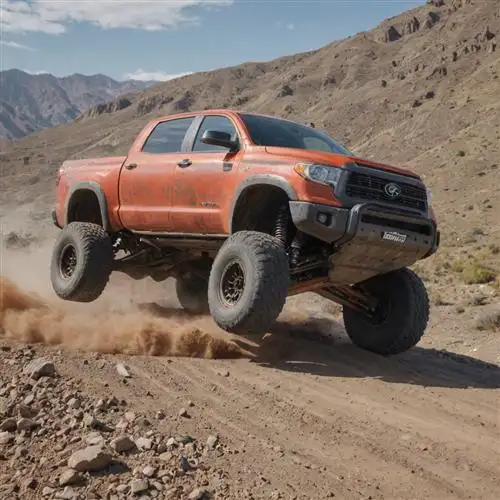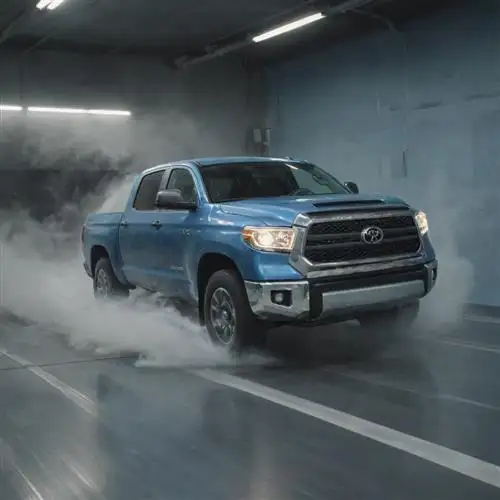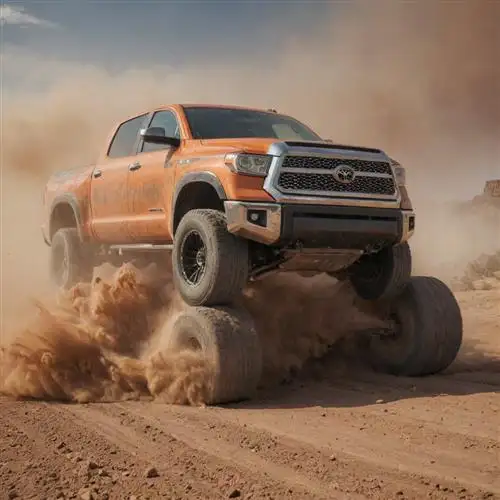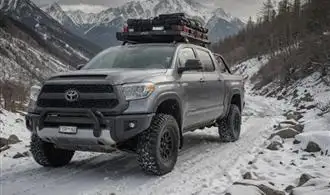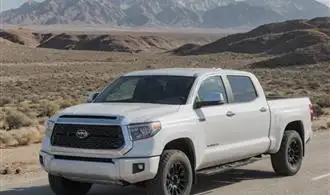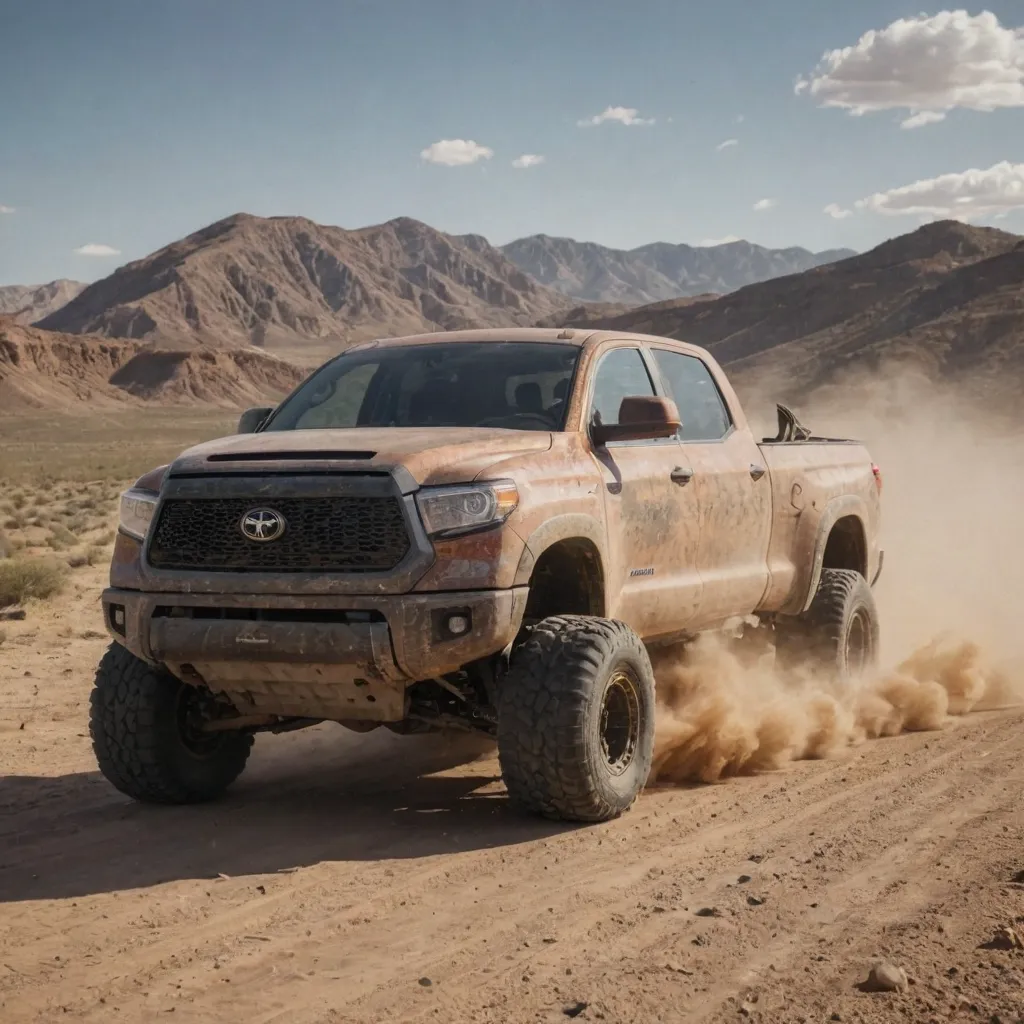
Engine Upgrades for Increased Power
Unlock the true potential of your Toyota Tundra by exploring the world of engine upgrades. Whether you're seeking a boost in horsepower, torque, or overall performance, the right engine modifications can transform your Tundra into a powerhouse on the road. From upgraded air intake systems to high-performance exhaust upgrades, the options are vast and each offers its own unique benefits.
One of the most effective ways to enhance your Tundra's engine performance is through a cold air intake system. By allowing more air to flow into the engine, these upgrades can provide a noticeable increase in horsepower and torque. Look for options from reputable brands that are designed specifically for your Tundra's engine, ensuring a seamless and efficient installation.
Exhaust upgrades are another powerful tool in your performance-enhancing arsenal. By replacing the factory exhaust system with a high-flow, performance-oriented alternative, you can unlock additional power and improve the overall sound of your Tundra. Opt for stainless steel or aluminum constructions for improved durability and corrosion resistance.
For those seeking even greater power, consider exploring forced induction upgrades such as turbochargers or superchargers. These advanced systems can significantly boost engine output, delivering a thrilling driving experience. However, it's important to carefully research and select components that are compatible with your Tundra's engine to ensure reliable and safe operation.
Suspension Modifications for Enhanced Handling
When it comes to enhancing the performance of your Toyota Tundra, suspension modifications play a crucial role in improving its handling capabilities. The stock suspension on the Tundra is designed for a comfortable ride and off-road capability, but if you're looking to take your truck's performance to the next level, a few strategic upgrades can make a significant difference.
One of the most effective suspension modifications for the Tundra is the installation of aftermarket shock absorbers. Upgrading to high-quality shocks can dramatically improve the truck's responsiveness, stability, and control, especially when navigating tight turns or uneven terrain. Look for shocks that offer adjustable compression and rebound damping, allowing you to fine-tune the suspension to your driving style and the conditions you encounter.
In addition to shocks, upgrading the Tundra's springs can also enhance its handling characteristics. Stiffer springs can help reduce body roll and improve the truck's overall stability, resulting in a more responsive and precise driving experience. When selecting new springs, consider your intended use for the Tundra, as different spring rates may be better suited for on-road performance, off-road adventuring, or a balance of both.
Another key suspension modification to consider is the installation of a lift kit. Lifting the Tundra can not only improve its off-road capabilities but also provide a more aggressive look and increased ground clearance. However, it's important to choose a lift kit that is compatible with your specific Tundra model and ensures the proper alignment and suspension geometry is maintained. Improper installation or the use of an unsuitable lift kit can negatively impact the truck's handling and safety.
For those seeking even more advanced suspension upgrades, the addition of adjustable control arms can offer a high degree of customization. These components allow you to precisely tune the Tundra's camber, caster, and toe, enabling you to optimize the truck's handling characteristics for your preferred driving style. While more complex to install, adjustable control arms can provide a significant improvement in cornering ability and overall vehicle control.
Regardless of the specific suspension modifications you choose, it's crucial to ensure that all components are properly installed and compatible with your Tundra's make, model, and year. Consulting with a reputable automotive specialist or experienced Tundra enthusiast can help guide you through the process and ensure that your suspension upgrades are both effective and safe.
Aerodynamic Enhancements for Improved Efficiency
Enhancing the aerodynamics of your Toyota Tundra is a crucial step in improving its overall performance and fuel efficiency. By reducing wind resistance, you can unlock significant gains in power, acceleration, and economy. One of the most effective ways to achieve this is through the installation of aerodynamic modifications, which can be tailored to your specific needs and driving conditions.
A well-designed aerodynamic kit, including elements such as front air dams, rear spoilers, and side skirts, can dramatically reduce the Tundra's drag coefficient. This translates to improved airflow over the vehicle's body, resulting in enhanced fuel efficiency and reduced wind noise. When selecting these components, it's essential to choose high-quality, wind-tunnel-tested parts that are specifically engineered for your Tundra model.
In addition to bolt-on aerodynamic enhancements, consideration should be given to modifications that can streamline the overall shape of your Tundra. This may include upgrades such as lowered suspension setups, which can reduce the vehicle's profile and minimize air resistance. Equally important are wheel and tire choices, as larger, wider tires can create unwanted turbulence if not carefully matched to the Tundra's aerodynamic profile.
The benefits of improved aerodynamics go beyond just fuel efficiency. Enhanced airflow can also contribute to improved high-speed stability and cornering, as the vehicle is less susceptible to crosswinds and sudden gusts. This can translate to a more confident and responsive driving experience, especially when towing or navigating challenging terrain.
Brake Upgrades for Increased Stopping Power
When it comes to enhancing the performance of your Toyota Tundra, few upgrades are as crucial as improving its braking capabilities. The stock brakes on the Tundra, while capable, can often struggle to provide the level of stopping power needed for more demanding driving conditions or when towing heavy loads. Upgrading your Tundra's brakes can not only improve its safety, but also give you greater control and confidence behind the wheel.
One of the most effective ways to increase the stopping power of your Tundra is to install a high-performance brake pad and rotor combination. Look for pads that are specifically designed for heavy-duty use, such as those made from semi-metallic or ceramic materials. These pads offer superior heat dissipation and increased friction, allowing for shorter stopping distances and reduced brake fade. Pair these pads with oversized, slotted, or cross-drilled rotors to further enhance braking performance and prevent warping under heavy use.
Another key upgrade to consider is a brake line upgrade. The stock brake lines on the Tundra are often made of rubber, which can expand and compress under high pressure, reducing brake responsiveness and pedal feel. Upgrading to braided stainless steel brake lines can significantly improve brake pedal feel and provide more immediate and consistent braking performance.
For those looking for the ultimate in braking performance, consider upgrading to a high-performance brake caliper and rotor kit. These kits typically feature larger, more powerful calipers and cross-drilled or slotted rotors that are designed to dissipate heat more efficiently. This can result in dramatically improved braking power, reduced brake fade, and enhanced overall driving dynamics.
Tire and Wheel Modifications for Better Grip and Acceleration
When it comes to enhancing the performance of your Toyota Tundra, one of the most impactful upgrades you can make is to the tires and wheels. The right tire and wheel combination can dramatically improve your truck's grip, acceleration, and overall driving dynamics. In this section, we'll dive deep into the key considerations for selecting the optimal tires and wheels for your Tundra.
Tire selection is crucial for enhancing your Tundra's performance. Look for tires that offer a balance of on-road and off-road capabilities, depending on your driving needs. All-terrain tires are a popular choice, as they provide excellent traction in a variety of conditions while maintaining a comfortable ride. When evaluating tire options, pay close attention to the tire's sidewall construction, tread pattern, and compound, as these factors will impact the tire's performance and durability.
Wheel choice is equally important. Upgrading to larger, wider wheels can significantly improve your Tundra's handling and acceleration. Wider wheels allow for the use of wider tires, which in turn provide more surface area for improved grip. Additionally, lighter-weight wheels can reduce unsprung weight, further enhancing responsiveness and efficiency. When selecting new wheels, consider the offset and backspacing to ensure proper fitment and clearance.
Another key consideration is the tire-to-wheel sizing ratio. A larger tire-to-wheel ratio, often referred to as "plus sizing," can provide enhanced traction and a more aggressive appearance. However, it's important to ensure that the new tire and wheel combination maintains the proper clearance and does not interfere with suspension components or body panels.


